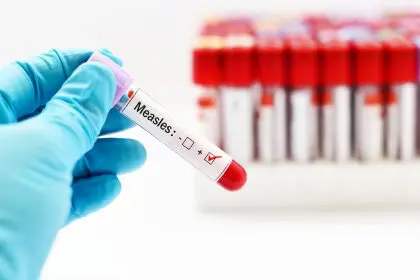Summer heat isn’t just uncomfortable – it’s a silent predator that can transform a beautiful day into a medical emergency faster than you can say “heat wave.” Heatstroke doesn’t politely announce its arrival with gentle warning signs that give you time to seek help. It ambushes your body’s cooling system, overwhelming your natural defenses and potentially causing permanent damage or death within hours.
Most people think heatstroke only happens to athletes pushing themselves to extremes or elderly people without air conditioning. The reality is that this condition can strike anyone, anywhere, when environmental conditions conspire with individual risk factors to create a perfect storm of overheating.
Understanding how heatstroke develops and recognizing the early warning signs could literally save your life or the life of someone you care about. This isn’t just about feeling hot and uncomfortable – it’s about recognizing when your body’s cooling system is failing and knowing how to respond before it’s too late.
Your cooling system can fail catastrophically
Your body normally maintains a core temperature around 98.6 degrees Fahrenheit through an incredibly sophisticated cooling system that involves sweating, blood vessel dilation, and behavioral changes like seeking shade. Heatstroke occurs when this system becomes overwhelmed and your core body temperature rises to dangerous levels, typically above 104 degrees Fahrenheit.
When external temperatures rise or you generate excess heat through physical activity, your body initially responds by increasing blood flow to your skin and producing sweat to cool you through evaporation. This system works remarkably well under normal conditions, but it has limits that can be exceeded when environmental heat, humidity, and physical exertion combine in dangerous ways.
High humidity is particularly dangerous because it prevents sweat from evaporating effectively, essentially sabotaging your body’s primary cooling mechanism. When sweat can’t evaporate, it just sits on your skin without providing any cooling benefit, while your body continues generating heat internally.
Dehydration compounds the problem by reducing your blood volume and making it harder for your cardiovascular system to pump blood to your skin for cooling. As your body becomes increasingly unable to regulate its temperature, your core temperature begins rising to levels that can damage vital organs and disrupt essential biological processes.
The warning signs escalate rapidly
Heatstroke doesn’t usually appear out of nowhere – it typically progresses through stages that begin with heat exhaustion and escalate to life-threatening heat stroke. Recognizing these early warning signs and taking immediate action can prevent progression to more dangerous stages.
Heat exhaustion symptoms include heavy sweating, weakness or fatigue, dizziness, nausea, headache, and muscle cramps. Your skin may feel cool and moist despite the heat, and you might experience rapid heartbeat as your cardiovascular system works harder to maintain blood flow for cooling.
As heat exhaustion progresses toward heatstroke, sweating may actually stop as your body’s cooling system begins to fail completely. This is a critical warning sign because it means your primary temperature regulation mechanism is shutting down. Your skin may become hot, red, and dry, indicating that your body can no longer produce adequate sweat for cooling.
Mental status changes are among the most serious warning signs of impending heatstroke. Confusion, agitation, irritability, and altered consciousness indicate that rising core temperature is beginning to affect brain function. These neurological symptoms represent a medical emergency that requires immediate intervention.
Your brain becomes the first casualty
Heatstroke affects your brain before it damages other organs, which is why altered mental status is such an important warning sign. As your core temperature rises, the heat begins disrupting normal brain chemistry and cellular function, leading to confusion, poor judgment, and potentially loss of consciousness.
The brain is particularly vulnerable to heat damage because it generates significant heat through its metabolic activity and relies on precise temperature regulation to function properly. When core temperature exceeds safe limits, brain cells begin to malfunction, leading to the altered mental status that characterizes heatstroke.
Seizures can occur as brain temperature rises to dangerous levels, and prolonged hyperthermia can cause permanent brain damage or death. The neurological effects of heatstroke can be irreversible if treatment is delayed, which is why immediate cooling is critical when heatstroke is suspected.
Changes in personality, behavior, or consciousness in someone exposed to heat should be treated as a medical emergency requiring immediate cooling measures and professional medical attention. Time is critical when brain function is being compromised by excessive heat.
Certain people face higher risks
Age significantly affects heat tolerance, with very young children and adults over 65 being at higher risk for heat-related illness. Children have less efficient sweating mechanisms and higher metabolic rates relative to their body size, while older adults may have chronic medical conditions or take medications that impair temperature regulation.
Chronic medical conditions like heart disease, diabetes, kidney disease, and respiratory conditions can compromise the body’s ability to regulate temperature effectively. These conditions may affect circulation, kidney function, or other systems involved in temperature control.
Many common medications can increase heatstroke risk by affecting sweating, blood flow, or kidney function. Diuretics can promote dehydration, beta-blockers can limit heart rate increases needed for cooling, and antihistamines can reduce sweating capacity. Always consult healthcare providers about heat precautions if you take regular medications.
Fitness level and heat acclimatization also play important roles in heat tolerance. People who are out of shape or not accustomed to hot environments are at higher risk when exposed to heat stress. It typically takes 10 to 14 days for the body to adapt to hot conditions through improved circulation and more efficient sweating.
Environmental factors create deadly combinations
Temperature alone doesn’t determine heatstroke risk – humidity, air movement, and radiant heat all contribute to the overall heat stress your body experiences. The heat index, which combines temperature and humidity, provides a better assessment of actual heat danger than temperature alone.
High humidity prevents sweat evaporation, which is your body’s primary cooling mechanism. When humidity exceeds 75 percent, sweating becomes much less effective at cooling your body, making you more vulnerable to overheating even at moderate temperatures.
Lack of air movement compounds the problem by preventing convective cooling and reducing sweat evaporation. Being in direct sunlight adds radiant heat load that your body must manage in addition to ambient temperature, significantly increasing your risk of overheating.
Urban heat islands can create localized areas where temperatures are significantly higher than surrounding areas due to concrete, asphalt, and reduced vegetation. These environments can be particularly dangerous because they trap heat and reduce natural cooling from wind and shade.
Immediate cooling can save lives
If you suspect someone is experiencing heatstroke, begin cooling immediately while seeking emergency medical attention. Every minute of delayed cooling increases the risk of permanent damage or death, so don’t wait for professional help to arrive before starting treatment.
Move the person to a cool, shaded area and remove excess clothing to maximize heat loss. If possible, place them in an air-conditioned environment or in front of fans to promote cooling through convection and evaporation.
Apply cold water to the skin and use fans to promote evaporation, or place ice packs on the neck, armpits, and groin where large blood vessels are close to the surface. Ice baths are highly effective if available, but cold water applied to the skin with fanning can also provide rapid cooling.
Monitor the person’s mental status and vital signs while cooling. If they’re conscious and able to swallow, provide small amounts of cool water, but avoid giving fluids to someone who is unconscious or vomiting as this could cause choking.
Prevention strategies protect against heat emergencies
Stay hydrated by drinking water regularly throughout the day, not just when you feel thirsty. Thirst is not a reliable indicator of hydration status, especially in hot conditions where you may be losing fluids faster than your thirst mechanism can detect.
Schedule outdoor activities during cooler parts of the day, typically early morning or evening, and take frequent breaks in shade or air-conditioned areas. If you must be active during hot periods, reduce intensity and duration while increasing rest breaks.
Wear lightweight, loose-fitting, light-colored clothing that allows air circulation and reflects heat rather than absorbing it. Wide-brimmed hats and sunglasses provide additional protection from radiant heat and direct sun exposure.
Gradually acclimatize to hot conditions over 10 to 14 days if you’re not used to heat exposure. Start with shorter periods of activity and gradually increase duration and intensity as your body adapts to the thermal stress.
Recognize personal risk factors and adjust accordingly
Pay attention to medications you’re taking and discuss heat precautions with your healthcare provider if you take drugs that affect circulation, kidney function, or sweating. Some medications may require dosage adjustments or additional precautions during hot weather.
Monitor your own heat tolerance and recognize early warning signs like fatigue, headache, or decreased performance that may indicate you’re becoming overheated. Stop activity and seek cooling before symptoms progress to more serious stages.
Be extra cautious if you have chronic medical conditions that may affect temperature regulation, and consider avoiding outdoor activities during extreme heat warnings. Your personal risk tolerance may be lower than that of healthy individuals.
Create a heat emergency action plan that includes knowing where to seek air-conditioned shelter, having emergency contacts readily available, and understanding when to seek medical attention for heat-related symptoms.
Hot cars become death traps within minutes
Never leave children, elderly adults, or pets in vehicles, even for short periods, as car interiors can reach lethal temperatures within minutes. Cracked windows provide minimal cooling and are insufficient to prevent dangerous temperature rises.
Vehicle interiors can reach temperatures of 120 degrees Fahrenheit or higher within 30 minutes on days when outside temperatures are only in the 80s. These temperatures can cause heatstroke and death very rapidly, particularly in vulnerable populations like young children.
Always check your vehicle before leaving to ensure no one is left inside, and make it a habit to look in the back seat every time you exit your car. Consider placing a reminder like your purse or briefcase in the back seat to force you to check the entire vehicle.
If you see a child or vulnerable adult left in a hot vehicle, call emergency services immediately and consider taking action to remove them from the vehicle if they appear to be in distress. Many states have Good Samaritan laws that protect people who take reasonable action to rescue someone from a dangerous situation.
Recovery requires medical attention and ongoing monitoring
Even with prompt treatment, heatstroke can have lasting effects that require medical monitoring and follow-up care. The kidneys, liver, brain, and other organs may suffer damage from prolonged hyperthermia that doesn’t become apparent until days or weeks later.
People who have experienced heatstroke may have increased sensitivity to heat in the future and should take extra precautions during hot weather. The body’s temperature regulation system may not function as effectively after a severe heat injury.
Complete recovery from heatstroke can take weeks or months, and some effects may be permanent depending on the severity of the episode and how quickly treatment was initiated. Follow up with healthcare providers is essential to monitor for complications and adjust activity levels appropriately.
Understanding that heatstroke is entirely preventable with proper precautions makes it even more important to take heat safety seriously and help educate others about the risks and prevention strategies that can save lives during hot weather.


















